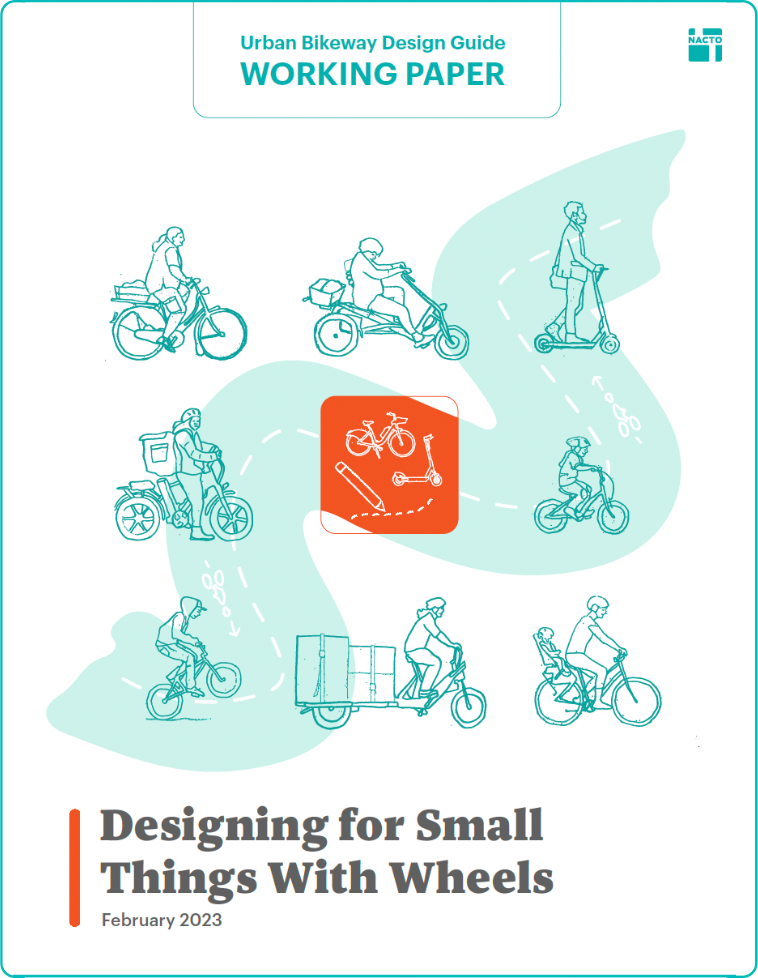Rethinking infrastructure design in the era of micromobility.
Over the past decade, biking and the use of shared micromobility has soared in North America. People in the U.S. have taken half a billion trips on shared bike and e-scooter systems since 2010, and e-bike sales in the U.S. grew three-fold between 2019 and 2021. This increase has come with an astonishingly wide variety of new devices; in addition to pedal bikes, e-bikes, cargo bikes, e-scooters, sit-down scooters, and powered skateboards are all increasingly common on North American city streets. These “small things with wheels” come in different sizes, move at a wide range of speeds, handle turns and surfaces differently, and attract people with varying degrees of skill and expertise.
Designing for Small Things With Wheels explores the strategies planners and engineers are employing to ensure that people riding this evolving variety of small things with wheels can comfortably ride in urban bikeways. The paper provides an overview of the key design considerations practitioners are examining, including new approaches to passing widths, queueing lengths, turn radii, grade changes, and surface materials.
Designing for Small Things With Wheels is the fifth in a series of working papers developed by NACTO with our member cities to address the most critical gaps in bikeway design guidance, as part of a long-awaited update to the Urban Bikeway Design Guide. Lessons learned since the Guide was first published a decade ago are being shared through these working papers. Later this year, NACTO will codify the papers into a new, third edition of the Urban Bikeway Design Guide.
Download Designing for Small Things With Wheels